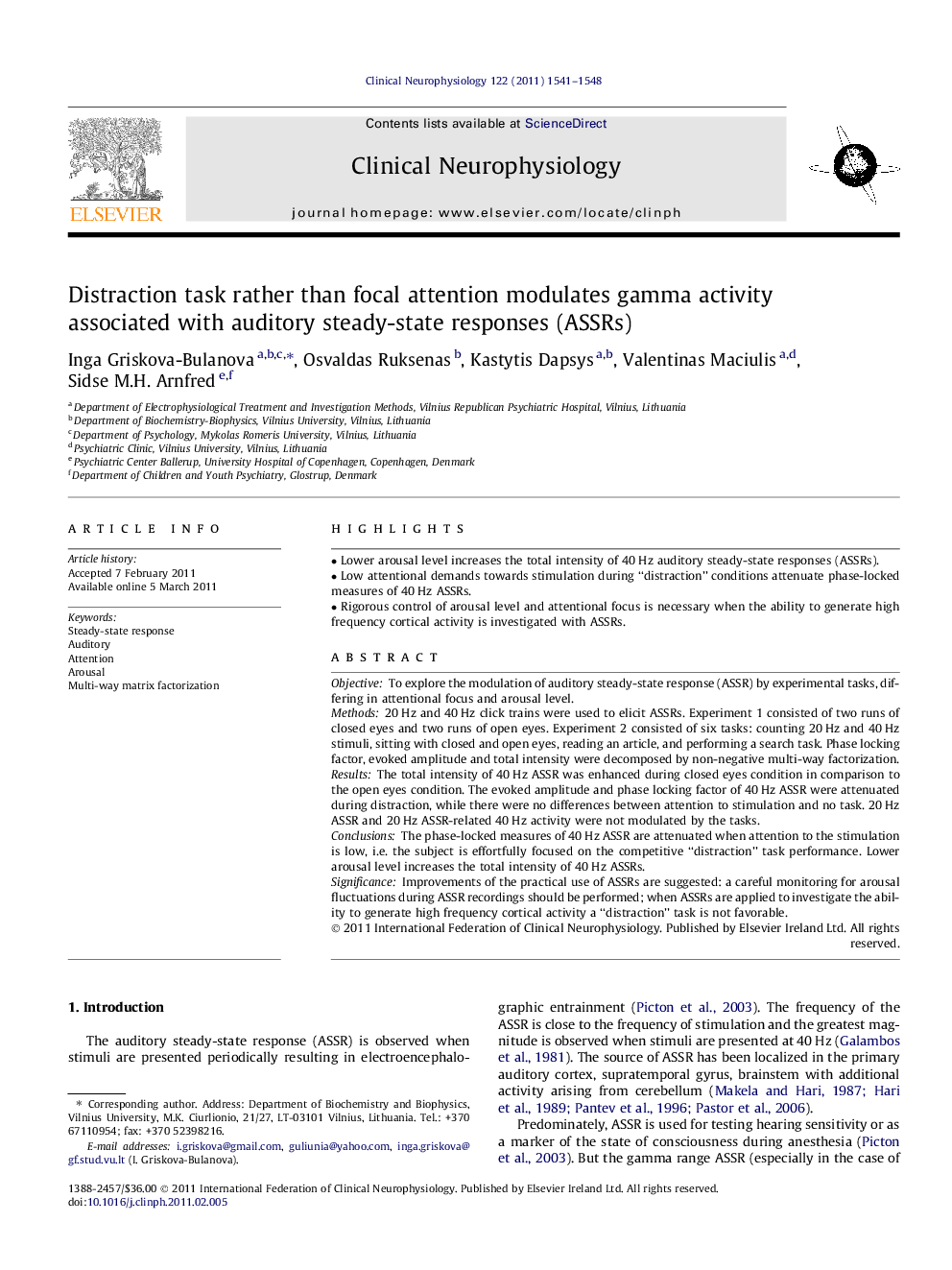| Article ID | Journal | Published Year | Pages | File Type |
|---|---|---|---|---|
| 3044017 | Clinical Neurophysiology | 2011 | 8 Pages |
ObjectiveTo explore the modulation of auditory steady-state response (ASSR) by experimental tasks, differing in attentional focus and arousal level.Methods20 Hz and 40 Hz click trains were used to elicit ASSRs. Experiment 1 consisted of two runs of closed eyes and two runs of open eyes. Experiment 2 consisted of six tasks: counting 20 Hz and 40 Hz stimuli, sitting with closed and open eyes, reading an article, and performing a search task. Phase locking factor, evoked amplitude and total intensity were decomposed by non-negative multi-way factorization.ResultsThe total intensity of 40 Hz ASSR was enhanced during closed eyes condition in comparison to the open eyes condition. The evoked amplitude and phase locking factor of 40 Hz ASSR were attenuated during distraction, while there were no differences between attention to stimulation and no task. 20 Hz ASSR and 20 Hz ASSR-related 40 Hz activity were not modulated by the tasks.ConclusionsThe phase-locked measures of 40 Hz ASSR are attenuated when attention to the stimulation is low, i.e. the subject is effortfully focused on the competitive “distraction” task performance. Lower arousal level increases the total intensity of 40 Hz ASSRs.SignificanceImprovements of the practical use of ASSRs are suggested: a careful monitoring for arousal fluctuations during ASSR recordings should be performed; when ASSRs are applied to investigate the ability to generate high frequency cortical activity a “distraction” task is not favorable.
► Lower arousal level increases the total intensity of 40 Hz auditory steady-state responses (ASSRs). ► Low attentional demands towards stimulation during “distraction” conditions attenuate phase-locked measures of 40 Hz ASSRs. ► Rigorous control of arousal level and attentional focus is necessary when the ability to generate high frequency cortical activity is investigated with ASSRs.
